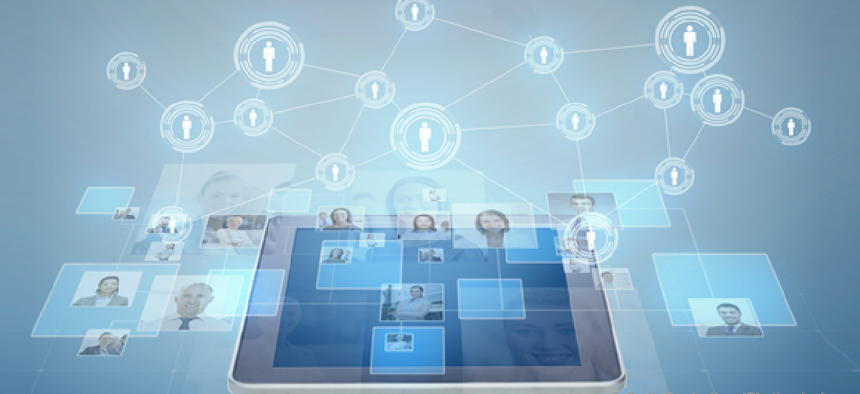Message growing clearer to agencies on collaboration apps

To extract the full productivity benefit from collaboration apps, make sure they include features that encourage workers to use and derive value from them.
Government decision makers are increasingly exploring messaging and collaboration apps to reduce workforce reliance on emails and the time spent (and often wasted) in meetings. Their interest is understandable: The average worker receives about 90 business emails a day, on top of having to track and manage multiple messaging threads, files stored in several places and business applications that don’t integrate with one another. As a result, analyst firm IDC found, the typical knowledge worker spends 2.5 hours per day just searching for information.
The appeal of messaging applications also acknowledges that attracting and recruiting millennial workers can be greatly aided if younger workers are offered the communication and collaboration tools they need to be productive. Recent data from the Office of Personnel Management indicates agencies can use all the recruitment help they can get: just 6.4 percent of federal workers were under 30 years of age in 2015 (the most recent year that data is available), a steep decline from over 10 percent in 2010.
Before agency decision makers select and deploy enterprise messaging and team collaboration applications for their workforces, however, they should ensure these applications deliver a set of key capabilities.
Built-in artificial intelligence
In its recently released 2017 Tech Trends Report, Deloitte identified artificial intelligence as one of the technologies likely to disrupt and change the way government organizations think about operations and service delivery models over the next 18-24 months. More specifically, Deloitte cited the rapid advancement of AI technologies and their potential to enhance citizen engagement, automate workloads and increase workforce productivity.
A 2016 White House report went a step further, calling on federal agencies to create “high-risk, high-reward” research on AI through organizations modeled after the Defense Advanced Research Projects Agency. Indeed, workforce productivity is an area ripe to benefit from artificial intelligence. As mentioned above, messaging applications are perceived as a potential lifeline for employees drowning in the rising volume of emails. Yet swapping emails for messages and messaging threads just trades one problem for another, because most applications still place the burden of manually filtering the influx of content, communications and notifications squarely on workers.
Now, however, we are seeing vendors add artificial intelligence and machine learning capabilities to bots designed to shift this burden away from employees and reduce the amount of time workers dedicate each day to the “orchestration” of work, rather than the work itself. By that I mean the time spent looking for information, preparing for meetings and sending/responding to emails -- time that often contributes little to day-to-day results and mission success.
AI upends the productivity time suck in several ways. For example, the ability to search through all a user’s cloud applications to find the documents, messages, social profiles and any content relevant to a current conversation or meeting lets workers collaborate effectively within one application while having the relevant content at their fingertips -- reducing the distractions and loss of productivity that can result from failed attempts to multitask.
Look beyond messaging
We are already seeing a shift of sorts from enterprise messaging apps to team collaboration solutions that add or integrate capabilities such as voice, video, project and task management, file sharing, note taking, etc. This is a response to a clear signal that applications that simply replace email with messaging are a short-term fix to a broader workforce challenge.
A December 2016, a Spiceworks survey found that only 25 percent of IT professionals believe chat applications will replace email within the next three to five years. The data strongly suggested lightweight chat applications spawned from consumer messaging platforms would not be sufficient for government and business users.
Today’s applications manage just a few aspects of work -- communications, tasks or content -- leaving teams disconnected from real-time work conversations or separating them from the flow of work content and information. Broader workforce adoption can be enabled through a more comprehensive solution that places all the tasks, projects, files, messages and notes a user needs in one place, along with in-demand capabilities such as video conferencing, click-to-call, screen sharing and integrations with business apps.
Think mobile first
It has been reported that, as of 2016, 11,000 of the U.S. Patent and Trademark Office’s 12,600 employees teleworked at least one day a week, while nearly half its workforce worked from home full time. Across the federal government, 20 percent of the workforce teleworks, which points to the key role team collaboration apps play in keeping mobile workers not simply connected but thoroughly engaged. Collaboration solutions must enable a single, integrated experience for voice, messaging, video, task management and conferencing as well as personal productivity, so that both government teams and individual workers are productive from any device, any location at any time.
Don’t overlook personal productivity
With all of the discussion around team productivity, agency decision makers should not lose sight of the fact that much of an employee’s typical workday is spent on personal or one-to-one work.
For that reason, collaboration solutions cannot ignore personal productivity capabilities. Think about how much time is spent organizing tasks, files and apps to accomplish everyday goals. Today’s government workers need a way to effortlessly transition from an individual context to one where they are interacting with others. When it comes to evaluating messaging and collaboration applications, agency decision makers should ensure workers can easily shift between solo, one-to-one and team work -- all along having the information they need at their fingertips.
The popularity of messaging and collaboration applications is rising across the public sector as decision makers seek to adapt to the way today’s employees want to work. But to ensure agencies are able to extract the full productivity benefits, it is important that these applications deliver the right capabilities that encourage workers to use the apps and derive the full value.





